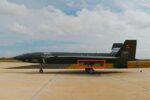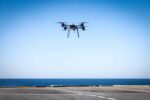Thales has reached a significant milestone with the receipt of its 100th order for the CAPTAS (Combined Active Passive Towed Array Sonar) family of variable depth sonar (VDS) systems. This achievement underscores the system’s widespread adoption and operational credibility across NATO and allied navies amid rising submarine threats in contested maritime zones.
CAPTAS Family Overview: Modular VDS for Modern ASW
The CAPTAS series—comprising CAPTAS-1 through -4—is Thales’ flagship line of low-frequency VDS systems designed to detect modern submarines operating under complex acoustic conditions. These systems combine active and passive sonar capabilities on a towed array that can be deployed at variable depths to counter temperature-layer masking effects that hinder hull-mounted sonars.
Key variants include:
- CAPTAS-1: Compact VDS for corvettes and smaller vessels.
- CAPTAS-2: Lightweight solution optimized for frigates with space constraints; e.g., used on French FDI-class frigates.
- CAPTAS-4: Full-scale system offering long-range detection; deployed on FREMM frigates and selected by several NATO navies including Italy and Germany.
The modularity allows navies to tailor ASW capability to platform size without compromising detection performance. All variants are compatible with modern combat management systems via standard interfaces such as Link-11/16 or STANAG protocols.
A Global Footprint Across NATO and Beyond
The CAPTAS sonar family is now operational or on order with more than a dozen navies worldwide. The latest order—marking the symbolic 100th unit—was placed by an undisclosed NATO country, further expanding Thales’ footprint in Europe’s maritime defense landscape.
Notable platforms equipped or planned to be equipped with CAPTAS include:
- French Navy FREMM & FDI-class frigates
- Italian Navy FREMMs
- Royal Navy Type 23s & future Type 31s
- German Navy F126-class frigates
- SAPURA Malaysia’s Littoral Mission Ships (LMS)
This broad adoption reflects both technical maturity and interoperability within multinational task forces—a critical factor given NATO’s emphasis on joint maritime operations. Thales also supports lifecycle sustainment through its international network of MRO facilities and digital twin-based predictive maintenance tools.
Tactical Advantages in Contested Waters
The resurgence of submarine activity by near-peer adversaries—particularly Russia in the North Atlantic and China in the Indo-Pacific—has driven renewed investment in undersea warfare capabilities. Variable depth sonars like CAPTAS are essential tools for detecting quiet diesel-electric submarines operating beneath thermoclines or using seabed topography as cover.
The CAPTAS-4 variant offers detection ranges exceeding several tens of kilometers under favorable conditions. Its ability to operate below surface-layer acoustic distortions gives it a decisive edge over traditional hull-mounted sonars, especially when paired with multi-static tactics involving shipborne helicopters such as NH90 NFH or MH-60R equipped with dipping sonars (e.g., FLASH).
Industrial Ecosystem and Integration Partners
The success of the CAPTAS program is not only a testament to Thales’ acoustic engineering but also to its collaboration with shipbuilders like Naval Group (France), Fincantieri (Italy), Damen (Netherlands), Babcock (UK), and TKMS (Germany). These partnerships ensure seamless integration into new-build hulls while also enabling retrofits into legacy platforms via modular installation kits.
The sonar arrays are manufactured at Thales’ facility in Brest, France, while signal processing units leverage AI-enhanced threat classification algorithms developed at Thales Underwater Systems UK. The company continues R&D into automated contact tracking and fusion with other ISR sources such as satellite AIS spoofing detection or UUV-based reconnaissance feeds.
Future Outlook: Toward Multi-Domain Undersea Dominance
The milestone comes as navies increasingly look toward distributed undersea sensor networks combining manned ships, unmanned surface vessels (USVs), unmanned underwater vehicles (UUVs), seabed sensors, and aerial ASW assets. While VDS remains central to shipboard ASW capability today, future iterations may involve hybridized systems integrating active-passive arrays onto autonomous platforms.
Thales is already exploring next-gen concepts under European Defence Fund-backed projects like EDA’s MUSCLE initiative for collaborative ASW operations using multiple sensor nodes. Meanwhile, digital twin modeling of sonar performance across oceanographic databases is being used to optimize deployment strategies before missions commence—a key enabler for multi-domain command-and-control architectures like NATO’s C4ISR frameworks.
Sustained Relevance Amid Strategic Shifts
The strategic value of proven VDS solutions like CAPTAS is unlikely to diminish soon. As submarine proliferation accelerates—with countries like Iran, North Korea, India, Australia investing heavily—the demand for reliable long-range detection tools will continue rising. With over two decades of combat-proven design evolution behind it and a robust industrial support base ahead, the CAPTAS family remains central to allied naval deterrence postures worldwide.









